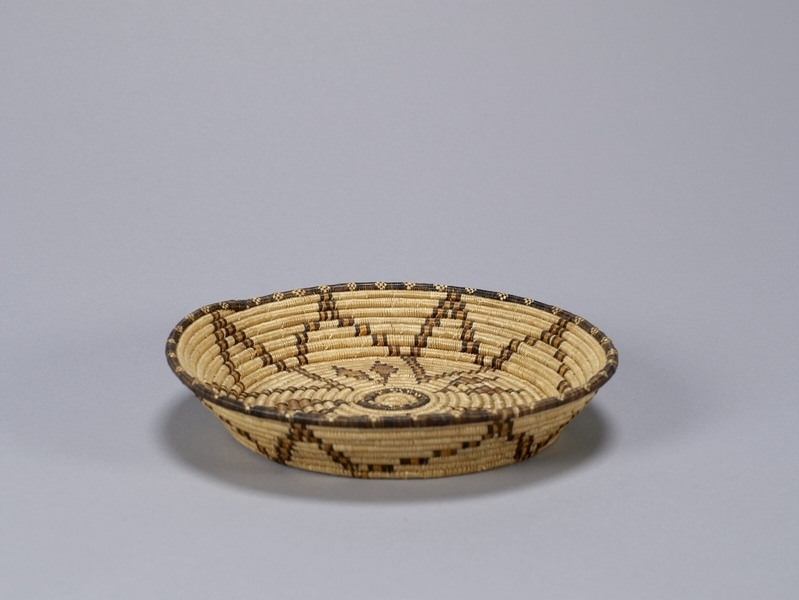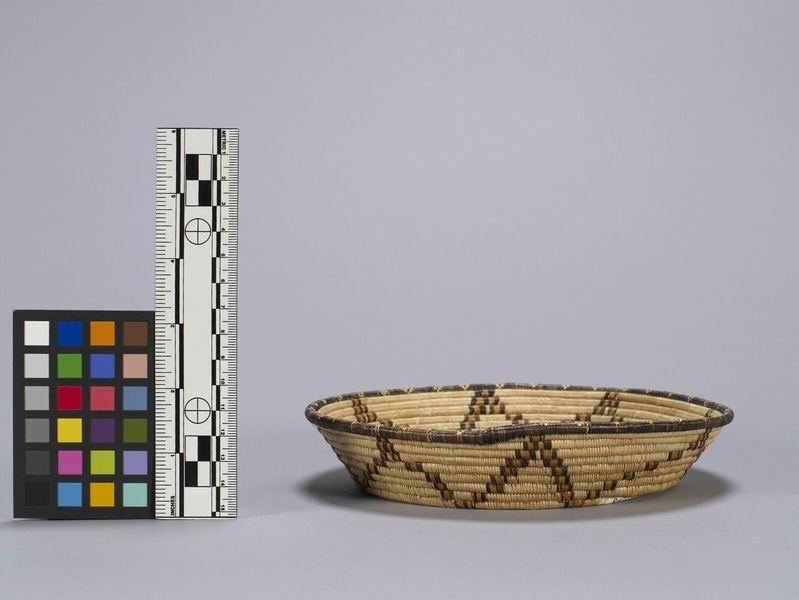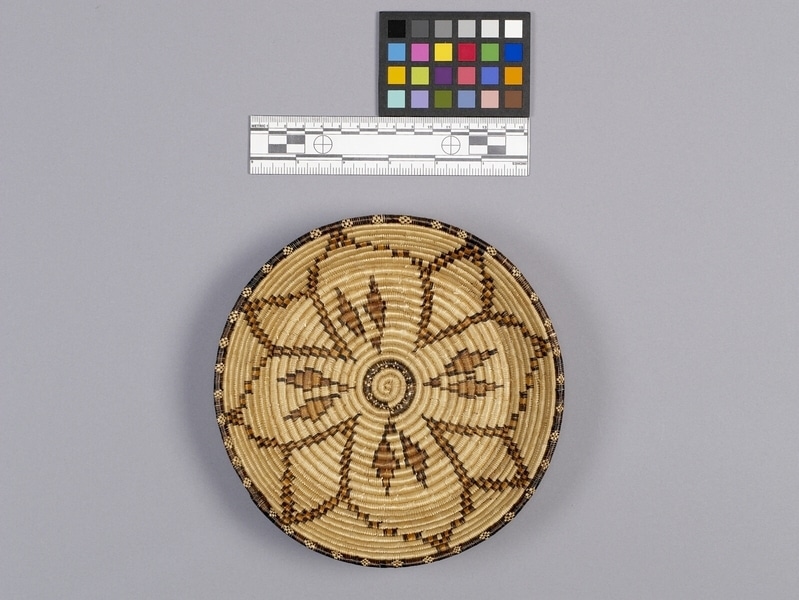Basket Item Number: K4.98 from the MOA: University of British Columbia



Description
A shallow coiled circular basket with sides that flare upward. The main design consists of an orange and black outlined eight leaf-petal-like shape on a natural grass colour. Four of the leaf-petals are larger and have a pair of side-by-side diamond shapes near the central dark brown circular line part which has the same pattern as the rim while the other four of the leaf-petals are smaller outward pointing triangles. The rim has a pattern of natural coloured checkered diamond shapes along a dark brown background.
History Of Use
Ongalo (tray-like baskets) are used for winnowing maize. They are also used to serve food. Grass weaving is done by both men and women, but baskets are traditionally woven by most women. Angular patterns and designs referencing the natural world are common among Ovimbundu basketry.
Narrative
Obtained by donor in 1950 when they were working at an Angolan school for women in Candrundungo. It is likely the basket maker was one of the women at the school.
Specific Techniques
Dyes used in this basket are yellow and black. Yellow dye is made from roots of wild rhubarb (ocilunguluila). The roots are pounded and placed in cold water with the grasses used to create the coils. Afterwards, the mixture is placed in a fire to boil for half an hour, turning the grasses amber-yellow. Black dye is made when the leaves of evava are mixed in a solution of iron obtained from stagnant muddy pools. Grasses are placed into the evava-iron solution and boiled to darken. It can be darkened further by boiling the solution again with the addition of pounded ungalo leaves.
Item History
- Made in Angola
- Collected during 1950
- Owned by Anne E. Copithorne before November 14, 1973
- Received from Anne E. Copithorne (Donor) on November 14, 1973
What
Who
- Culture
- Ovimbundu
- Previous Owner
- Anne E. Copithorne
- Received from
- Anne E. Copithorne (Donor)
Where
- Holding Institution
- MOA: University of British Columbia
- Made in
- Angola
When
- Collection Date
- during 1950
- Ownership Date
- before November 14, 1973
- Acquisition Date
- on November 14, 1973
Other
- Item Classes
- basketry
- Condition
- good
- Current Location
- Case 100
- Accession Number
- 0251/0108